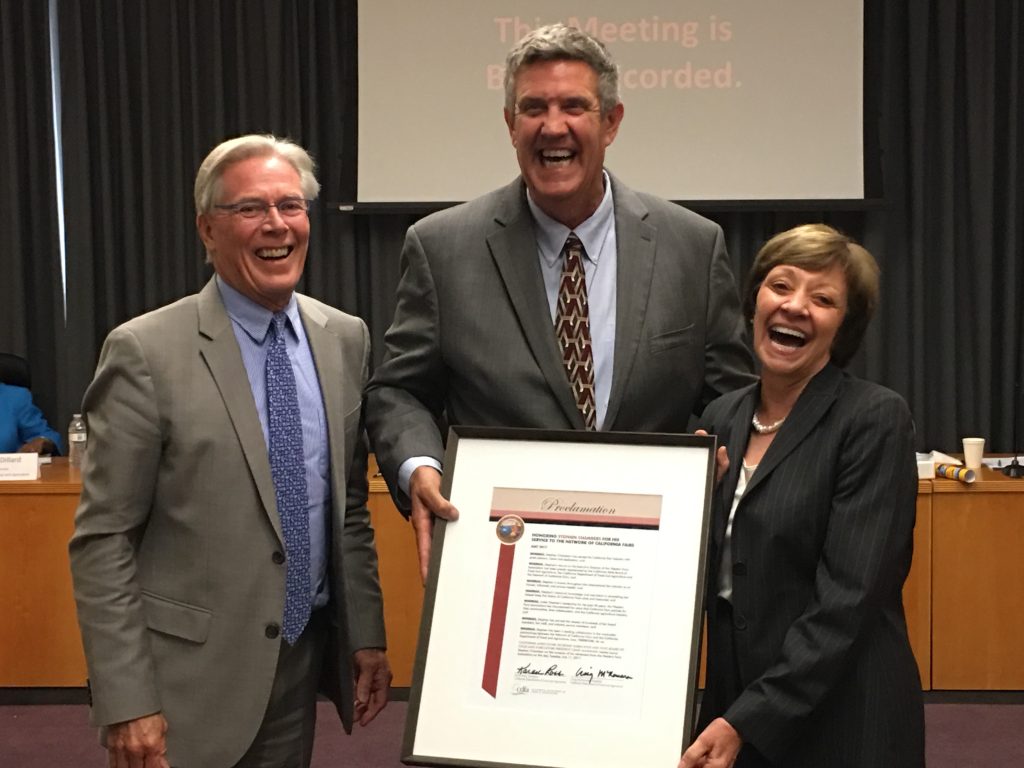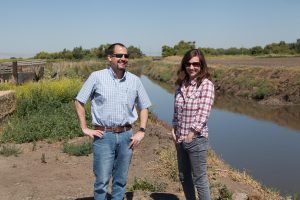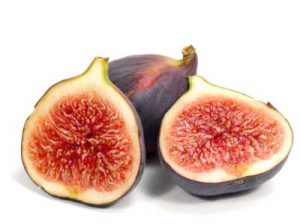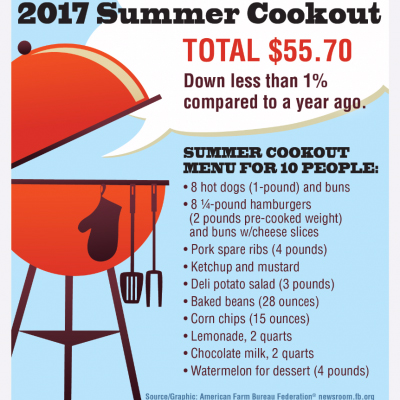-
Recent Posts
- Lowering the boom on illegal fireworks — CDFA teamed up with San Bernardino County Fire to confiscate 13 tons prior to July 4th
- $600 million for CDFA in new budget year
- A Pride Month Conversation with Cody Nicholson Stratton, of Foggy Bottoms Boys Farms
- Experience California Agriculture — Secretary Ross applauds new agritourism website from California Grown
- CDFA Celebrates Pride Month with Panel of LGBTQ+ Voices
Recent Comments
- Yvonne McCurley on A Pride Month Conversation with Cody Nicholson Stratton, of Foggy Bottoms Boys Farms
- Diana Shima on A Pride Month Conversation with Cody Nicholson Stratton, of Foggy Bottoms Boys Farms
- Andy on Experience California Agriculture — Secretary Ross applauds new agritourism website from California Grown
- EDWARD RING: Saving California’s rural water users ~ MAVEN'S NOTEBOOK | California Water News Central on Nine California Counties Make Top-10 List for Ag Sales in the U.S.
- Urban agriculture grows in the Sacramento region • Sacramento News & Review on Community Alliance for Family Farmers emergency fund for drought and pandemic relief
Archives
- July 2025
- June 2025
- May 2025
- April 2025
- March 2025
- February 2025
- January 2025
- December 2024
- November 2024
- October 2024
- September 2024
- August 2024
- July 2024
- June 2024
- May 2024
- April 2024
- March 2024
- February 2024
- January 2024
- December 2023
- November 2023
- October 2023
- September 2023
- August 2023
- July 2023
- June 2023
- May 2023
- April 2023
- March 2023
- February 2023
- January 2023
- December 2022
- November 2022
- October 2022
- September 2022
- August 2022
- July 2022
- June 2022
- May 2022
- April 2022
- March 2022
- February 2022
- January 2022
- December 2021
- November 2021
- October 2021
- September 2021
- August 2021
- July 2021
- June 2021
- May 2021
- April 2021
- March 2021
- February 2021
- January 2021
- December 2020
- November 2020
- October 2020
- September 2020
- August 2020
- July 2020
- June 2020
- May 2020
- April 2020
- March 2020
- February 2020
- January 2020
- December 2019
- November 2019
- October 2019
- September 2019
- August 2019
- July 2019
- June 2019
- May 2019
- April 2019
- March 2019
- February 2019
- January 2019
- December 2018
- November 2018
- October 2018
- September 2018
- August 2018
- July 2018
- June 2018
- May 2018
- April 2018
- March 2018
- February 2018
- January 2018
- December 2017
- November 2017
- October 2017
- September 2017
- August 2017
- July 2017
- June 2017
- May 2017
- April 2017
- March 2017
- February 2017
- January 2017
- December 2016
- November 2016
- October 2016
- September 2016
- August 2016
- July 2016
- June 2016
- May 2016
- April 2016
- March 2016
- February 2016
- January 2016
- December 2015
- November 2015
- October 2015
- September 2015
- August 2015
- July 2015
- June 2015
- May 2015
- April 2015
- March 2015
- February 2015
- January 2015
- December 2014
- November 2014
- October 2014
- September 2014
- August 2014
- July 2014
- June 2014
- May 2014
- April 2014
- March 2014
- February 2014
- January 2014
- December 2013
- November 2013
- October 2013
- September 2013
- August 2013
- July 2013
- June 2013
- May 2013
- April 2013
- March 2013
- February 2013
- January 2013
- December 2012
- November 2012
- October 2012
- September 2012
- August 2012
- July 2012
- June 2012
- May 2012
- April 2012
- March 2012
- February 2012
- January 2012
- December 2011
- November 2011
- October 2011
- September 2011
- August 2011
- July 2011
- June 2011
Categories
- AG Vision
- Agricultural Education
- Agricultural Marketing
- Alternative Fuels
- Animal health
- Animal Welfare
- Asian Citrus Psyllid
- Biodiversity
- Border stations
- BSE
- Cannabis
- Cannella Panel
- Climate Change
- Climate Smart Agriculture
- Community-based Food System
- Conservation
- Dairy
- Drought
- Environment
- Fairs
- Farm Bill
- Farm Labor
- Farmers' Markets
- Fertilizer
- Food Access
- Food Safety
- Food Waste
- Glassy-winged Sharpshooter
- Growing California
- Healthy soils
- HLB
- Hydrogen
- Integrated Pest Management (IPM)
- Invasive Species
- Light Brown Apple Moth
- Livestock ID
- Measurement Standards
- Nutrition
- Organic agriculture
- Pierce's Disease
- Pollinators
- Specialty Crops
- State Board of Food and Agriculture
- Succession Planning
- Trade
- Uncategorized
Pages
RSS

Fairs executive Stephen Chambers honored for 30 years of service to industry
Posted in Uncategorized
1 Comment
Crops, water and habitat are a California farmer’s winning trifecta – from the Environmental Defense Fund blog
By Ann Hayden
During times of water scarcity, like California’s recent drought, it’s tempting to take on a binary view of the world. This was definitely the case with agriculture, which appeared to be at odds with everyone: farms vs. fish, farm vs. cities, farms vs. regulators. As a dominant water user in the state, they were easy targets.
But when one digs deeper, it’s obvious that many in the agricultural community want to move beyond this debate and do things differently. Yes growing food and fiber takes water, but there are plenty of farmers laser-focused on improving efficiency, maximizing multi-benefit solutions and striking a balance between growing crops and preserving the environment.
I recently visited with Cannon Michael, president of Bowles Farming Company, which oversees an 11,000-acre farm near Los Banos in California’s San Joaquin Valley. He is the great, great, great grandson of Henry Miller, “the Cattle King of California,” so farming is in his blood. He has senior water rights, and while he still had to make difficult management decisions during the drought, he ended up with more water than many of his neighbors and found ways to share it, a tremendous display of collaboration in the farming community.
Now Cannon is working with Environmental Defense Fund (EDF) to create a plan to enhance agriculture and wildlife benefits on his property and serve as a model for others. Below, he shares his thoughts.
Your family has a long and storied history in California agriculture. Did you always know you would follow the family tradition?
I’m the 6th generation of my family to work in California agriculture. But it wasn’t always the career path I was planning on. I was born and raised in the San Francisco Bay Area and I often visited the farm as a young boy. I have vivid memories of driving out to the country, opening the car door and running for miles – the freedom was amazing. In high school I worked every summer on the farm and enjoyed learning to irrigate, drive tractors and the value of a hard day’s work. I graduated from UC Berkeley and started down a different career path, but eventually I found my way back to the country. Agriculture is in my blood, and I was destined to be a farmer.
How have you adjusted to less water availability?
We were pretty proactive over a decade ago and installed drip irrigation. To be frank, this wasn’t done over water concerns alone; we saw it as an opportunity to increase yield and improve the quality of our products, especially tomatoes. During the recent drought, we were able to leverage drip irrigation and continue to grow our operations. It also opened up opportunities for us to strategically fallow some ground and transfer water to some of our neighbors who had no supply at all.
To what degree do sustainability and conservation factor in to the management decisions you make on the farm? What drives your conservation ethic?
Farmers inherently know what sustainability is. We must be sustainable if we want to continue to grow good products and stay in business. I don’t see any farmer intentionally wanting to do things that impact their workers, the surrounding environment that they live in or their end consumers. That isn’t a good or logical strategy.
That’s not to say that farmers can’t be doing more. There’s a learning piece to sustainability. I may be able to grow a great crop of tomatoes, but I didn’t know what it took to successfully restore habitat areas on the farm. My core strength isn’t being a biologist or a habitat restoration expert. That’s why it’s nice to have partners, like EDF, and the opportunities presented through the Central Valley Habitat Exchange. That way I can make sustainable, holistic management decisions that benefit my farm and the surrounding environment.
What type of conservation practices or restoration projects have you implemented on your property?
We worked with biologists and habitat restoration specialists to reestablish water fowl habitat and riparian corridors on the property. It really had a profound impact on me when I realized just how much diversity we were supporting. I remember when we got the first bird survey back after we completed the riparian corridor work it said we had 49 different species of bird. Looking at a field of tomatoes, there are variances – but it’s still just a field of tomatoes. So it’s pretty amazing that in the same area there’s also all these species of birds, butterflies and terrestrial species. It adds a richness to the place and brings diversity to the day. I used to find myself looking out of only one side of my truck window at the cropland, but now as I drive, I slow down and focus equally on our habitat.
Farmers and environmentalists have often been at odds when it comes to land and water management. Are you hopeful this dynamic can change?
I think the dynamic is changing because the agricultural community and environmentalists are finding a lot of overlap in our work and shared goals for a healthy environment and reliable water supply. We all recognize the challenges of a limited water supply so everyone is coming to the table to figure out how to cope. It’s important to remember that there are intelligent and motivated people on both sides. The environmental community brings a lot of information and expertise on habitat and riparian restoration. Farmers know how to get projects done, and they know the local context. So there’s a really great synergy happening between the two groups. At the end of the day, we all want a vibrant and healthy environment in California and a reliable and safe food supply.
Posted in Uncategorized
Leave a comment
Figs are ripe for the picking – from the Santa Rosa Press Democrat
By Jeff Cox
How lucky we are to live in this region’s Mediterranean climate — because we can eat fresh, tree-ripened figs!
Folks who live outside of (our region) may have never tasted a fig pulled right off the tree. A tree-ripened fig is sweet and fruity, luscious, intriguingly flavored, and pure joy on the palate.
Here’s how you can spot a tree-ripe fig. Unripe figs may color up but they’re not quite ripe yet. They stand out from the branch on stiff peduncles — the bit of wood that attaches the fruit to the branch. When the fig is truly tree-ripe, that peduncle softens and the fig hangs loosely from the branch. That’s the signal — and then the race is on — between the human fig aficionado and the little Argentine ants that have turned our state into a giant ant colony — to see who can harvest them first. (They) love figs as much as we do. Maybe more.
Figs are native to the Levant (the nations of Cyprus, Egypt, Iraq, Israel, Jordan, Lebanon, Palestine, Syria, and Turkey) and have been cultivated for about 11,000 years, making them one of the first crops when agriculture was developed. An early farmer would certainly have loved the fact that they dry easily and store that way for months, providing energy and food during lean winters
For many people, the Black Mission variety, first planted in California at Mission San Diego in 1769, sets the standard for quality. Lovers of yellow figs praise Calimyrna figs, whose amber flesh is sweet and nutty.
If you’ve driven around Fresno on Highway 99, you may have seen acres of fig trees with paper bags attached to them. The bags cover the fruits to prevent over-pollination and subsequent split fruit.
While most figs don’t need pollination to develop, Calimyrna figs do. Of the thousands of cuttings of Turkish Smyrna figs brought to California in the 1880s, not one bore fruit. It was discovered that a tiny fig wasp must pollinate the Turkish figs, and so the wasps were imported to California and now work those paper bag fig orchards producing Calimyrnas.
Calimyrna is a name combining “California” and “Smyrna.” The variety itself, however, is not one produced through a breeding program, but it is from one of the cuttings brought to California in the latter part of the 19th century. It is identical to the Lob Injir variety (a sub-variety of Smyrna) that has been grown in Turkey for many centuries and is considered by many to be the world’s tastiest fig. Figs are nutritious, with sugar, dietary fiber, calcium, potassium and good stores of thiamine, riboflavin and niacin.
Posted in Uncategorized
Leave a comment
Foundation for Food and Agriculture Research launches multi-million-dollar international effort to accelerate crop development
The Foundation for Food and Agriculture Research (FFAR), a nonprofit organization established through bipartisan congressional support in the 2014 Farm Bill, has joined with a number of private sector partners to launch the Crops of the Future Collaborative, a new consortium that will accelerate crop breeding to meet global food demand 20-50 years in the future. FFAR’s initial $10 million commitment is expected to leverage significant additional investment from partners.
With the world population projected to reach 9.8 billion people by 2050, the Crops of the Future Collaborative will accelerate crop breeding through an innovative public-private model that pools proprietary knowledge, financial resources and technology to carry out crop-specific research initially focusing on maize, leafy greens, and wheat and small grains. The consortium will hone in on how a crop’s genetic information can yield traits needed to meet global nutritional demands in a changing environment.
The new consortium will increase capacity to breed crops with specific traits, leading to plants that are adapted to different environments. Target crop characteristics might include enhanced nutritional qualities or ability to withstand environmental challenges such as drought, heat, or flooding. Ultimately, knowledge generated by the Collaborative will be publicly available through scientific publications and informational platforms, benefiting public and private crop breeding efforts.
Posted in Uncategorized
3 Comments
CDFA chemistry lab says farewell to Nirmal Saini after a 41-year career
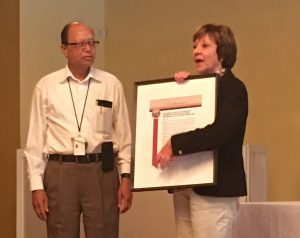
CDFA Secretary Karen Ross presents a proclamation to Nirmal Saini in honor of his 41 years of public service.
Surrounded by his wife, four children, grandchildren, and extended family and friends, Nirmal Saini celebrated his retirement at a luncheon on Friday, June 30. A banquet room full of his colleagues and peers paid tribute to their friend, led by both California Department of Food and Agriculture (CDFA) Secretary Karen Ross and Department of Pesticide Regulation (DPR) Director Brian Leahy.
Nirmal Saini’s career in public service has spanned 41 years, 39 of which were at CDFA’s Center for Analytical Chemistry, also known as the chem lab or just “the lab.” In a nutshell, the lab protects the food supply by ensuring that various foods and feeds meet established standards, from organics and pesticide levels to a range of other chemical analyses for both CDFA and DPR. As branch chief at the lab, Nirmal has had a hand in every major hire, purchase, upgrade or project for decades. He took a sincere interest in the lives and families of lab employees, serving as mentor to many.
He leaves the lab in the capable hands of people whose careers he has nurtured throughout his tenure. Their work is informed by his example and inspired by the spirit of his service. Thank you, Nirmal, and congratulations.
Posted in Uncategorized
1 Comment
July 4th cookout prices down slightly for 2017 – from the Sierra Sun Times
A cookout of Americans’ favorite foods for the Fourth of July, including hot dogs, cheeseburgers, pork spare ribs, potato salad, baked beans, lemonade and chocolate milk, will cost slightly less this year, coming in at less than $6 per person, according to the American Farm Bureau Federation.
Farm Bureau’s informal survey reveals the average cost of a summer cookout for 10 people is $55.70, or $5.57 per person. The cost for the cookout is down slightly (less than 1 percent) from last year.
“As expected, higher production has pushed retail meat prices down,” said AFBF Director of Market Intelligence Dr. John Newton.
Competition in the meat case is making grilling for July 4th even more affordable for consumers this year, Newton noted.
“Retail pork prices also declined in 2017, largely due to more pork on the market and ample supplies of other animal proteins available for domestic consumption. Lower beef prices are most likely putting downward pressure on pork prices,” he said.
AFBF’s summer cookout menu for 10 people consists of hot dogs and buns, cheeseburgers and buns, pork spare ribs, deli potato salad, baked beans, corn chips, lemonade, chocolate milk, ketchup, mustard and watermelon for dessert.
With regard to drivers behind the moderate decrease in dairy prices, Newton said, “We continue to see stability in dairy prices because of the improving export market. Chocolate milk will be a little more affordable this July 4th, in part because some retailers are promoting it as a sports recovery drink superior to other sports drinks and water.
He also noted the retail price of American cheese has declined due to very large inventories and a lot of competition in the cheese case.
Newton said retail dairy and meat prices included in the survey are consistent with recent trends and are expected to continue to be stable.
Commenting on watermelon prices, Newton said, “Although U.S. farmers continue to increase watermelon production, consumer demand has also increased, contributing to higher retail prices.”
A total of 97 Farm Bureau members in 25 states served as volunteer shoppers to check retail prices for summer cookout foods at their local grocery stores for this informal survey.
The summer cookout survey is part of the Farm Bureau marketbasket series, which also includes the popular annual Thanksgiving Dinner Cost Survey and two additional surveys of common food staples Americans use to prepare meals at home.
The year-to-year direction of the marketbasket survey tracks closely with the federal government’s Consumer Price Index report for food at home. As retail grocery prices have increased gradually over time, the share of the average food dollar that America’s farm and ranch families receive has dropped.
“Through the mid-1970s, farmers received about one-third of consumer retail food expenditures for food eaten at home and away from home, on average., That figure has decreased steadily and is now about 16 percent, according to the Agriculture Department’s revised Food Dollar Series,” Newton said.
Using the “food at home and away from home” percentage across-the-board, the farmer’s share of this $55.70 marketbasket would be $8.74.
Posted in Agricultural Marketing
Leave a comment
CDFA Honors Environmental Farming Science Advisory Panel Member Luana Kiger on Her Retirement
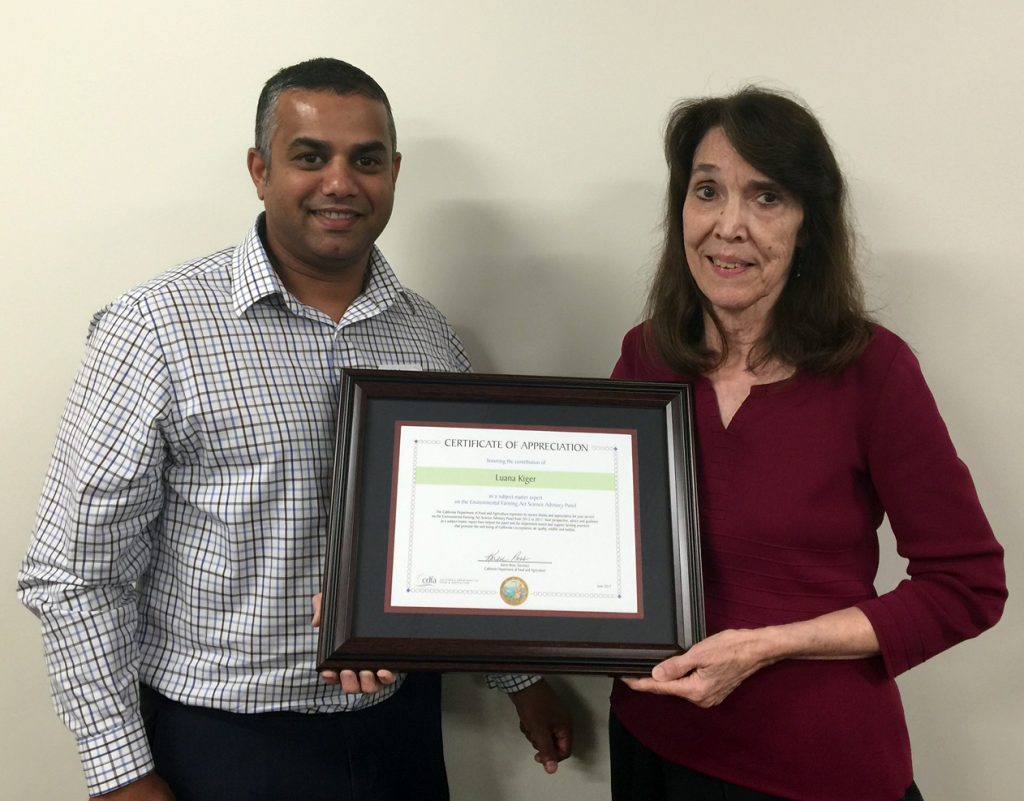
CDFA science adviser Dr. Amrith Gunasekara presents a proclamation from Secretary Karen Ross honoring the USDA’s Luana Kiger for her service to CDFA’s Environmental Farming Act Science Advisory Panel
The Environmental Farming Act Science Advisory Panel (Science Panel), appointed by CDFA Secretary Karen Ross, has the critical job of assessing and documenting agriculture’s positive impacts on the environment. The group examines issues like ecosystem services and how they relate to agriculture. The panel has also been responsible for developing the framework for the State Water Efficiency and Enhancement Program (SWEEP) and the Healthy Soils Program (HSP) – two new incentive programs designed to reduced atmospheric greenhouse gases, save water, sequester carbon and increase soil health.
Luana Kiger, Special Assistant to the State Conservationist for the United States Department of Agriculture’s Natural Resources Conservation Service (NRCS) in California, is one of the founding members of the Science Panel, and her service concludes July 3 when she retires as a federal employee.
“NRCS California, under the leadership of State Conservationist Carlos Suarez, has been an incredible partner for us and Luana has provided many hours of time and advice as we worked to build our incentive programs” said Secretary Ross.
Science Panel chair Don Cameron said, “Luana has been a very engaging member of the Science Panel and provided lots of good direction on our programs. We are going to miss her participation but we are happy she is beginning a new chapter of her life.”
Ms. Kiger has also helped the Science Panel make important connections with other technical staff in NRCS and other federal agencies.
“Having a key contact person with the right technical expertise at the federal level who can not only provide advice to you but also connect you to other pertinent technical and policy staff is key to getting things done in a timely manner,” said Dr. Amrith Gunasekara, CDFA’s liaison to the science panel and science adviser to the secretary.
Posted in Climate Change, Climate Smart Agriculture, Environment
1 Comment
Seeking applications for the 2017 Governor’s Environmental and Economic Leadership Awards
The Governor’s Environmental and Economic Leadership Award (GEELA) is California’s highest environmental honor. The award honors individuals, organizations, and businesses that have demonstrated exceptional leadership and made notable, voluntary contributions in conserving California’s precious resources, protecting and enhancing our environment, building public-private partnerships, and strengthening the state’s economy. Applications for the 2017 awards are being accepted through Friday, August 11, 2017.
Categories
GEELA recipients will be chosen from five categories and one subcategory:
- Climate Change
- Automobile Dealer Zero Emission Vehicle (ZEV) Promotion
- Ecosystem and Land Use Stewardship
- Environmental Education
- Sustainable Practices, Communities or Facilities
- Waste Reduction
Who May Apply/Eligibility
The awards will be presented for voluntary achievements culminated in 2016. Competition is open to all California residents, businesses, nonprofit organizations, professional and trade associations, communities, state and local government entities, tribes, and federal agencies operating in California. Projects are deemed ineligible if they are the result of mitigation, litigation, or required by legislation. Those who applied previously are welcome to apply again.
Award Selection
The annual Governor’s Environmental and Economic Leadership Award is administered by the California Environmental Protection Agency, in partnership with the California Natural Resources Agency, the California Department of Food and Agriculture, the California State Transportation Agency, the California Business, Consumer Services, and Housing Agency, the California Government Operations Agency, the California Labor and Workforce Development Agency, and the California Health and Human Services Agency.
Past GEELA Awards include (farming/ranching):
Premier Mushrooms Inc. (2016); Prather Ranch (2015); Sonoma County Winegrape Commission (2015); Parducci Wine Cellars (2014/2009); Lodi Wine Grape Commission (2014); California Sustainable Winegrowing Alliance (2014/2010); Joseph Gallo Farms (2012); Houweling’s Nurseries (2011); Venida Packing Company (2010); Gills Onions, LLC (2009); Tejon Ranch Company (2009); Bioenergy Solutions (2009); Dixon Ridge Farms (2008); Kunde Family Estates (2008); Fetzer Vineyards (2008); Mendocino Wine Company (2007); California Dairy Quality Assurance Program (2007); Meyers Farming (2007); Lodi-Woodbridge Winegrape Commission (2006); Agricultural Internal Combustion Engine Conversion Incentive (2006); and Hearst Ranch Conservation Project (2006);
Posted in Uncategorized
Leave a comment
This quiet agricultural ‘moonshot’ could change the future of food – from the Washington Post
By Jenna Gallegos
The global population is skyrocketing, the climate is changing, and diets are shifting. So how do you tackle the problem of feeding 9 billion people by 2050? Assemble an elite team of scientists for a year-long brainstorming session.
The first meeting of “Science Breakthroughs 2030” just convened to discuss the key advances essential for revolutionizing food and agriculture in the next decade. The resounding theme: What’s needed is akin to a moonshot. Or as committee co-chair John D. Floros put it, a “green revolution 2.0.”
“This is something we owe to society … to really look forward as far as we can see and find better solutions,” Floros said.
The effort dates to last fall, when the Foundation for Food and Agriculture Research (FFAR) and the Supporters of Agricultural Research Foundation (SoAR) teamed up to commission a report identifying the greatest challenges, opportunities and knowledge gaps in food and agriculture. The National Academy of Sciences answered the call and assembled the panel of eight staff and 13 scientists from institutions across the country. Their expertise ranges from nutrition to climate science to nanotechnology, and the report they’re set to deliver next March will lay out a “strategic vision” for how to rapidly improve the quality and quantity of food.
Half a century ago, scientists similarly asked how to feed a growing population. Their answer: “invest more in agricultural technology,” recounted Floros. That investment kick-started what became known as the green revolution. During it, new crop varieties, technological advances, changes in agricultural practices and shifts in the storage and transport of food all contributed to a dramatic increase in agricultural output.
But according to some experts, that investment and the growth it fueled has begun to stagnate. The U.S. Department of Agriculture’s budget for agricultural research “has been flat for a decade,” noted Robert A. Easter of SoAR. And many green-revolution solutions have reached their limits. Irrigation once made possible an agricultural boon, for example, yet sources for that water are drying up in many places. So the challenge becomes finding new ways to grow crops with less water, Easter said.
Lurking pathogens also threaten the global food supply. “We are one major disease away from starvation,” Floros warned this week. Easter agreed. “We are already grappling with diseases with no obvious solutions,” he said, pointing to citrus-greening disease, which is decimating oranges in Florida. An important cereal crop could be next, Easter added.
Future progress, however, will rely on much more than hardy plants. As discussion in the first “breakthroughs” meeting and interviews afterward made clear, data and computational science already are playing increasingly important roles in agriculture.
“Twenty-first-century challenges require 21st century approaches,” said Sally Rockey, executive director of FFAR. While many people tend to view agriculture as a tradition-bound system, “it really is a cutting-edge science.”
Genomic data is being used to breed new crops and satellite data to identify water and nutrient needs within a field. “There will be data behind every seed we plant,” committee co-chair Susan Wessler said.
There’s even a term for this: precision agriculture. Farmers have begun to use drones and sensors to monitor variations in everything from photosynthesis levels to leaf color. In addition to increasing crop yields, precision agriculture can improve soil and water quality by minimizing the use of excess fertilizer.
Yet work also must be done beyond technology; social sciences and economics come into play. “You can have a great technology,” said Mary Bohman, administrator of USDA’s Economic Research Service, “but if it doesn’t adapt well with [farmers’] business … that technology won’t be adopted.”
The same goes for consumers. “If the consumer does not accept a certain technology … we can have big failures,” Floros said.
Meanwhile, the agricultural workforce is aging and lacks diversity. And, Wessler said, the best and brightest agricultural labs are largely populated by researchers from abroad. In places like China, agriculture is considered a valuable career choice.
Rockey wants the committee to think about “a magnet” to attract young talent in this country. According to Wessler, one powerful hook for students is the opportunity agriculture offers to help humanity.
The Science Breakthroughs 2030 report is targeted for completion before the current farm bill expires. The committee will meet five times this year, mostly behind closed doors. Its initial session was filmed and is available online. To submit comments or ideas to the committee, visit the IdeaBuzz platform.
Posted in Climate Change, Drought, Environment, Food Access
Leave a comment
Cultivators of Change – celebrating our shared diversity
Earlier this month I had pleasure to speak before the Cultivating Change Summit in Sacramento. The summit brought together LGBT agriculturalists from around the world who are working toward an equitable industry environment that is inclusive of all. It was a true honor for me to be recognized at the conference as a 2017 Cultivator of Change.
California celebrates the diversity of our agricultural family. Diversity is not only our strength in agricultural production (large/small, organic/conventional) but also our strength in connecting to our communities and consumers. It’s not just the products we grow and produce, but also about the people who help to farm, harvest, transport and market the food we enjoy every day.
LGBT agriculturalists are an important part of California agriculture – not just for LGBT Pride Month, but every day.
California welcomes and celebrates you as part of our agricultural community!
Posted in Community-based Food System
Leave a comment


